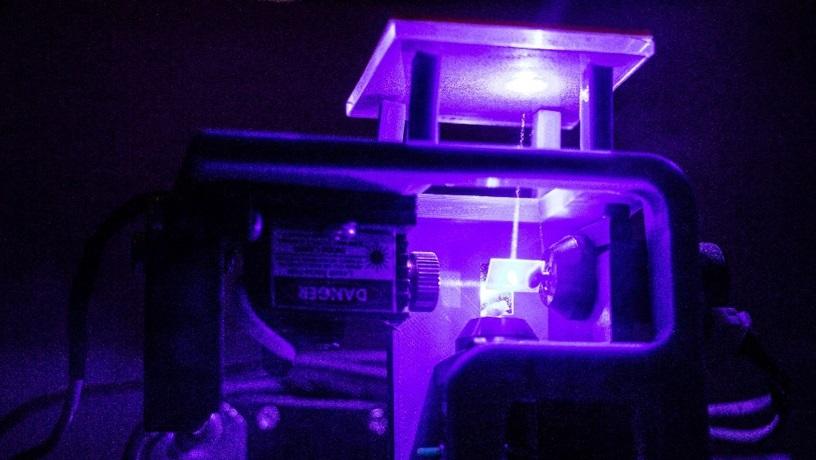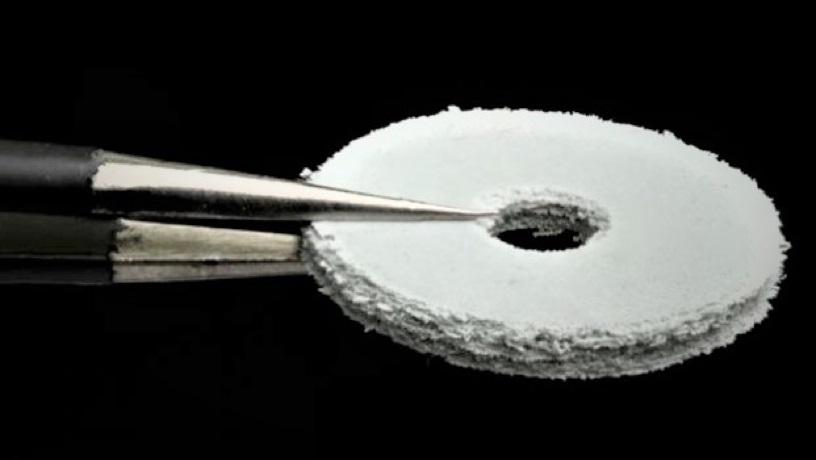- FMA
- The Fabricator
- FABTECH
- Canadian Metalworking
Researchers invent laser inversion technique for multimaterials 3D printing
- August 12, 2020
- News Release
- Metalworking
Over the past decade, the field of 3D printing has grown at a rate of more than 20% per year. One of the most widely used manufacturing processes, selective laser sintering (SLS), prints parts out of micron-scale material powders using a laser: The laser heats the particles to the point at which they fuse together to form a solid mass.
“Additive manufacturing is key to economic resilience,” said Hod Lipson, a professor of mechanical engineering and data science and James and Sally Scapa Professor of Innovation at Columbia University.“All of us care about this technology—it’s going to save us. But there’s a catch.”
The catch is that SLS technologies have been limited to printing with a single material at a time: The entire part has to be made of just that one powder.
“Now, let me ask you,” Lipson continued, “how many products are made of just one material? The limitations of printing in only one material have been haunting the industry and blocking its expansion, preventing it from reaching its full potential.”
Wondering how to solve this challenge, Lipson and his PhD student John Whitehead used their expertise in robotics to develop a new approach to overcome these SLS limitations. By inverting the laser so that it points upwards, they invented a way to enable SLS to use multiple materials at the same time.
Their findings are presented in the study “Inverted multi-material laser sintering.”
“Our initial results are exciting,” said Whitehead, the study’s lead author, “because they hint at a future where any part can be fabricated at the press of a button, where objects ranging from simple tools to more complex systems like robots can be removed from a printer fully formed, without the need for assembly.”
SLS traditionally has involved fusing together material particles using a laser pointing downward into a heated print bed. A solid object is built from the bottom up, with the printer placing down a uniform layer of powder and using the laser to fuse some material selectively in the layer. The printer then deposits a second layer of powder onto the first layer, the laser fuses new material to the material in the previous layer, and the process is repeated until the part is completed.
This process works well if there is just one material used in the printing process. But using multiple materials in a single print has been very challenging, because once the powder layer is deposited onto the bed, it cannot be unplaced or replaced with a different powder.
“Also,” added Whitehead, “in a standard printer, because each of the successive layers placed down are homogeneous, the unfused material obscures your view of the object being printed until you remove the finished part at the end of the cycle. Think about excavation and how you can’t be sure the fossil is intact until you completely remove it from the surrounding dirt. This means that a print failure won’t necessarily be found until the print is completed, wasting time and money.”
The researchers decided to find a way to eliminate the need for a powder bed entirely. They set up multiple transparent glass plates, each coated with a thin layer of a different plastic powder. They lowered a print platform onto the upper surface of one of the powders and directed a laser beam up from below the plate and through the plate’s bottom. This process selectively sinters some powder onto the print platform in a preprogrammed pattern according to a virtual blueprint. The platform then is raised with the fused material and moved to another plate, coated with a different powder, where the process is repeated. This allows multiple materials to either be incorporated into a single layer or stacked. Meanwhile, the old plate is replenished.
The paper describes how the team developed a working prototype by generating a 50-layer-thick, 2.18-mm sample of thermoplastic polyurethane (TPU) powder with an average layer height of 43.6 microns and a multimaterial nylon and TPU print with an average layer height of 71 microns. These parts demonstrated both the feasibility of the process and the capability to make stronger, denser materials by pressing the plate hard against the hanging part while sintering.
“This technology has the potential to print embedded circuits, electromechanical components, and even robot components. It could make machine parts with graded alloys, whose material composition changes gradually from end to end, such as a turbine blade with one material used for the core and different material used for the surface coatings,” Lipson noted. “We think this will expand laser sintering towards a wider variety of industries by enabling the fabrication of complex multimaterial parts without assembly. In other words, this could be key to moving the additive manufacturing industry from printing only passive, uniform parts towards printing active, integrated systems.”
The researchers are now experimenting with metallic powders and resins to generate parts directly with a wider variety of mechanical, electrical, and chemical properties than is possible with conventional SLS systems today.
subscribe now


Keep up to date with the latest news, events, and technology for all things metal from our pair of monthly magazines written specifically for Canadian manufacturers!
Start Your Free Subscription- Trending Articles
Identifying the hallmarks of a modern CNC

Tooling for spot facing and counterboring is completely customizable

CTMA launches another round of Career-Ready program

Collet chuck provides accuracy in small diameter cutting

Sandvik Coromant hosts workforce development event empowering young women in manufacturing

- Industry Events
MME Winnipeg
- April 30, 2024
- Winnipeg, ON Canada
CTMA Economic Uncertainty: Helping You Navigate Windsor Seminar
- April 30, 2024
- Windsor, ON Canada
CTMA Economic Uncertainty: Helping You Navigate Kitchener Seminar
- May 2, 2024
- Kitchener, ON Canada
Automate 2024
- May 6 - 9, 2024
- Chicago, IL
ANCA Open House
- May 7 - 8, 2024
- Wixom, MI
















